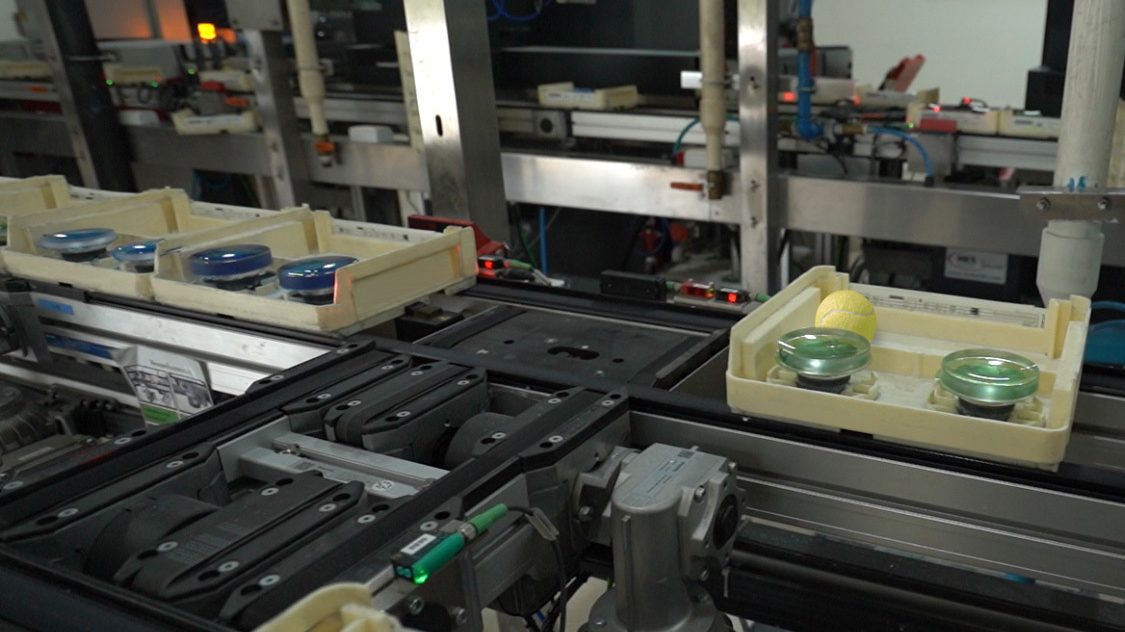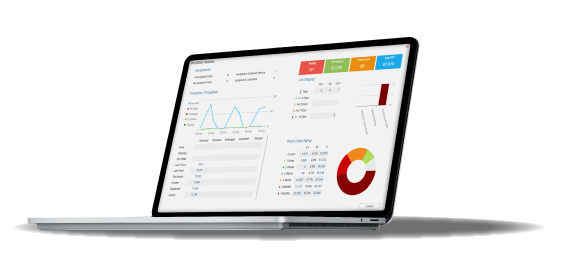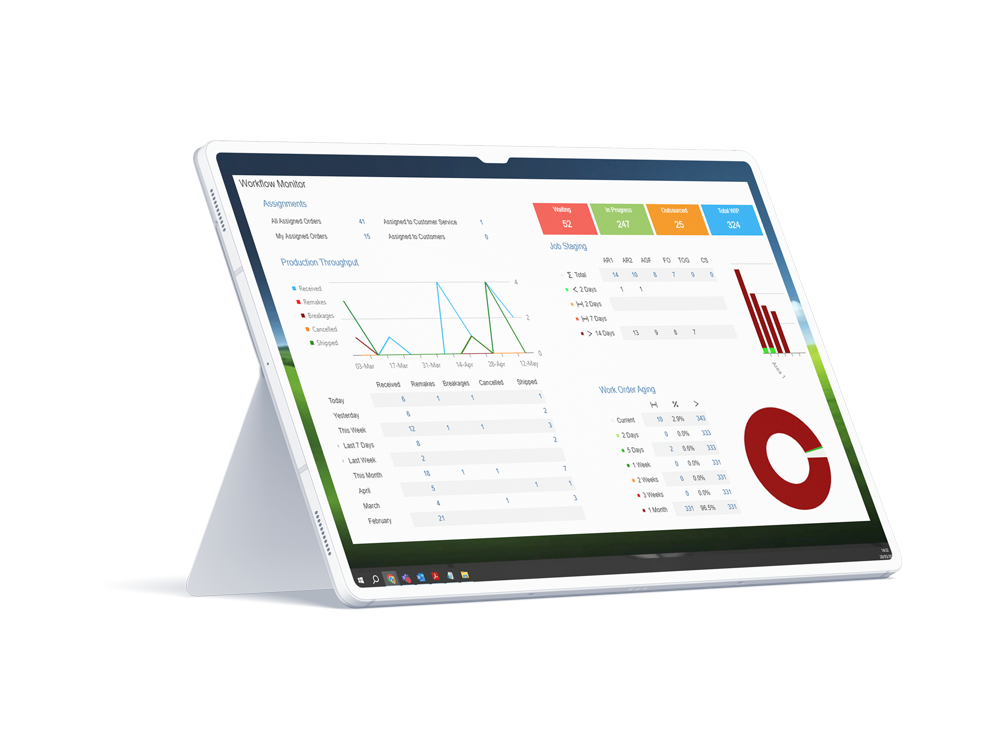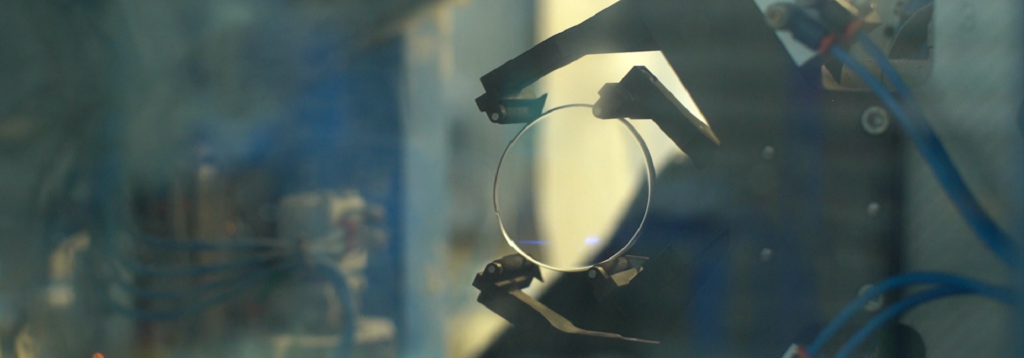The Vision Council reported that lenses generated $17.2 billion in prescription market value in 2024, with continued growth expected in 2025. That steady demand is pushing optical labs to increase throughput, reduce errors and keep costs under control, often without adding staff. To meet these demands, more labs are turning to advanced optical lab software solutions, designed to automate workflows, improve visibility, and connect every step of production from surfacing to shipping.
In almost three decades in the optical industry, I’ve seen labs tackle these challenges in different ways. Some double down on manual processes. Others take a step back and re-evaluate the systems running their operation, starting with their optical Lab Management Software (LMS).
The labs making the most progress are moving beyond disconnected systems and limited tracking. They’ve built connected environments where equipment and software work together. Automation handles repetitive tasks. Real-time data supports faster, better decisions from order intake to final inspection.
That’s exactly why we built Innovations: to help labs like yours run smarter, faster and with more control. Ocuco’s lab management software for optics is purpose-built for surfacing, edging, coating, finishing, inspection and shipping. It connects directly to your lab equipment and integrates with EHRs, ERPs and third-party systems.
We’ve seen several examples of this kind of transformation in the field. Collier Optical significantly reduced breakage after switching to Innovations. LensDirect.com doubled its output and saved 90 minutes a day by automating admin tasks. And Thai Optical Group (TOG) brought manual job reviews down from 20% to 5% while scaling beyond 12,000 jobs daily. Each of these labs approached it differently, but all gained the visibility, control and efficiency needed to move forward with confidence.
In this guide, discover how Innovations optical lab software solution transforms labs and streamlines operations.
Why Labs Need Smarter Optical Lab Software Solutions
Most labs I talk to weren’t built for the demands they’re facing today. Lens portfolios have become more complex, turnaround times are tighter and customers expect fast, flawless service every time. Labs are now expected to process online orders, run freeform surfacing, edge multiple materials and provide real-time updates to eyecare professionals (ECPs) and retail groups; all while protecting razor-thin margins.
However, I still see too many labs relying on outdated optical lab software that was never designed for this reality. Traditional lab management systems were built for simpler, more linear workflows. They weren’t made to integrate with today’s machines, automate complex production logic, or provide the kind of real-time visibility you need to run efficiently and competitively.
For instance, many labs still use tray decorating stations where operators add items like clips, tags, or even tennis balls to job trays, which often indicates a breakdown in workflow or a lack of technology. I remember when we used to manually fill out tiny cardboard cards with patient names and tray numbers, then slide them into the sides of the trays. Imagine trying to find a specific patient with all the different levels of handwriting legibility.

The tennis ball practice remains surprisingly relevant in labs even today. The idea was simple: you couldn’t stack another tray on top of one with a tennis ball, so that tray would always be the first to move forward. It also signaled a task was a priority, though most lab workers weren’t exactly sure why.
With smart optical lab software, prioritization is now handled electronically, avoiding confusion or disruption in automated environments. Imagine the chaos if a robotic stacker tried to place a tray on top of one with a tennis ball!
I’ve seen what happens when a broken integration brings production to a standstill, or when techs are spending more time fixing routing issues than making lenses. Once your lens lab software becomes a liability, no amount of staff effort can make up for the gaps.
What a Modern LMS Looks Like in Action
That’s why having a modern ophthalmic lab software in place is no longer optional. Here’s what changing to a smarter optical lab management system looks like:
- Collier Optical started with a lens production software that couldn’t support their production. Support delays and unreliable data flow left their surfacing line idle. After they switched to Innovations, their breakage rate dropped to zero and job flow across their equipment became stable and consistent.
- At LensDirect.com, the team had to build manual workarounds to move jobs through production. Their lab management for optics couldn’t scale with demand. After switching to Innovations, they automated job routing, doubled output and cut processing time by up to two minutes per order.
- TOG needed to scale from 6,000 to over 10,000 jobs per day without increasing headcount. With Innovations, they automated 95% of production and reduced manual job reviews from 20% to just 5%.
These aren’t just efficiency wins. They’re examples of what happens when a lab has the tools to stay agile. When your digital surfacing software can handle scale, adapt to change and integrate with your partners, you’re in a much stronger position to compete.
That’s the real reason labs need a smarter optical lab automation software. It’s not just about getting jobs out the door, it’s about running a lab ready for what’s next. Automation, transparency and integration aren’t luxuries anymore. They’re the foundation for staying ahead.
If your lab is seeing more remakes, longer lead times, or struggling to keep up with customer demands, it’s worth asking: is your system supporting you or slowing you down? No workaround will ever replace the consistency, intelligence and control that a system like Innovations is built to deliver.
What Makes a Great Lab Management System (LMS)?
From a development standpoint, building a great optical LMS means solving the real problems labs face daily on the production floor. That’s what we’re doing with Innovations.
We built Innovations to give labs complete control over job flow, data accuracy, system integrations and scalability. But a great optical job tracking system needs more than control. It should be intuitive for staff to learn quickly and stable enough to run in the background without constant oversight. Innovations strikes that balance, combining powerful functionality with everyday usability so your team can focus on production, not problems.
Collier Optical found that when they switched to Innovations. They were stuck with a fragmented, DOS-style system that slowed them down. With Innovations, they could easily navigate features they’d never been able to access before.
Take job tracking. We designed modules like Workflow Monitor and InnovaWeb to give labs complete visibility, from order intake to inspection, whether at a workstation or working remotely. That real-time transparency helps reduce remakes and lets labs respond instantly to issues.

Reporting is another critical area. When you’re processing thousands of jobs daily, you can’t afford to wait for end-of-day exports. We’ve ensured that Innovations offers customizable dashboards that instantly give labs the information they need. Thai Optical Group (TOG) uses it to monitor KPIs across shifts; LensDirect.com uses real-time reporting to spot inefficiencies and adjust in the moment. Nippon Lens uses Innovations reports to investigate errors, debrief teams and optimize performance across freeform and conventional workflows.
Then there’s integration. We’ve invested in ensuring seamless data handoffs, whether to Satisloh or Schneider equipment, IOT lens designs or ERP systems. That’s how TOG scaled to over 10,000 jobs per day with zero downtime.
And then there’s automation. The Rules Engine is one of the features we’re most proud of. It lets labs define production logic once and let the system take over: routing trays, prioritizing urgent jobs and managing surfacing paths. LensDirect.com doubled its throughput this way. Automation isn’t just about volume; it’s about consistency. Once a rule is defined, the RX lab management software executes it the same way every time, reducing technician fatigue and improving output quality.
Finally, great software needs great support. Our global team responds to tickets fast (often within an hour!) even for low-priority issues. That gives labs peace of mind when they’re under pressure. Ben Collier logs most of his support queries as low priority, but still gets responses within the hour through JIRA. That kind of responsiveness, he says, is priceless.
A great LMS doesn’t just manage jobs; it empowers labs to grow, adapt and deliver better outcomes with less effort. That’s what we build for every day.
Want to explore which features really impact LMS performance? Click here to read our guide on the top features to look for in optical lab management software.
Job Tracking Made Simple: Built for the Way Labs Really Work
In any optical lab, tracking jobs is essential. When trays are delayed or misplaced, it disrupts the entire workflow. That’s why we made real-time job tracking a core function in Innovations. We developed Scan and Verify so that every barcode scan updates the job status instantly. No paperwork, no miscommunication. Just clean, verified data across the lab. Collier Optical found this gave them confidence right from the start of production and nearly eliminated remakes.
Job Staging was our way of helping labs manage all the moving parts of an order. By grouping frames, lenses and add-ons, tracking and matching them correctly becomes easier. This small change in job tracking for optical labs has helped labs speed up turnaround time and avoid delays.
With Workflow Monitor, labs can view every job in progress live. You can track jobs by department, resolve bottlenecks quickly and reduce manual tray searches. TOG, for example, uses it to monitor KPIs and manage thousands of jobs per day across multiple shifts.

We developed InnovaWeb for remote access and customer service. It gives authorized users access to job data from any browser. Labs like LensDirect.com rely on it to respond faster to customer queries and keep their operations moving without needing to be on-site.
Whether you manage the floor or work from the front office, Innovations gives your lab the tools to track every tray, reduce delays and deliver on time without stress.
Automating the Lab Workflow
Manual review slows labs down and increases the risk of delays and errors. That’s why automation is no longer optional for optical labs. Innovations solves this problem using data-driven rules to control how work is routed and processed. Every decision is based on logic and executed automatically to maintain speed and consistency.
Innovations’ core is the Rules Engine, which allows labs to automate routing based on job status, material, coatings, or customer-specific workflows. This eliminates manual task assignments and ensures each job follows the most efficient and accurate path. For example, Thai Optical Group (TOG) uses the Rules Engine to configure and adjust production logic independently, ensuring flexibility without compromising speed.
Automation only works if it’s transparent. That’s where Workflow Monitor and InnovaWeb come in. These tools let labs track production at a glance, flagging bottlenecks, highlighting dwell times and alerting the team when action is needed. With InnovaWeb, business owners, managers and staff stay connected and make informed decisions about their lab remotely. For an optical lab, this means being able to monitor production metrics, review job statuses, or address urgent system alerts without having to be on-site.
For example, if a lab experiences a machine error overnight, a manager with remote access can log in, assess the issue and coordinate a response with the team before the next shift starts, minimizing downtime and keeping orders on track.
Going Beyond Production: Backend Automation and Integration
Innovations also automates repetitive backend workflows like print events and job ticket formatting. These can be customized by job type or customer, reducing print errors and removing routine tasks from the technician’s workload.
Rule-based printing would be an extension of both the use of rules and automation. In today’s fast-paced business environment, efficient and reliable printing solutions are essential. Innovations has introduced a robust set of features under Printing Conditions to streamline and enhance the printing process. Printing Conditions in Innovations provide users with enhanced control over printing processes, templates, printers and bins. This functionality is designed to be more visual and intuitive, allowing for a more streamlined and efficient printing experience. This is particularly useful for complex printing requirements where different conditions need to be met.
Lablink connects external ECPs to the lab in real-time. It allows for remote job submission and tracking, with options for custom catalogs, branded portals and customer-specific pricing, all synchronized with the lab’s internal workflows.
Finally, the Production Scheduler uses real-time production data to estimate job completion accurately. This helps labs allocate resources more effectively and reduces the volume of inbound calls from ECPs. LensDirect.com saw a measurable drop in customer service inquiries once the scheduler went live, freeing internal teams to focus on value-added tasks.
Innovations give labs the tools they need to automate intelligently, not just for speed but also for accuracy, consistency and production resilience. For labs scaling up volume, increasing complexity, or trying to reduce errors, automation through data-driven logic is the foundation that makes all the difference.
Centralising Lab Data: Inventory, Lens Stock, Prescriptions and Accounts
Ask any lab manager what keeps production moving and the answer’s almost always the same: reliable data. When data is scattered across systems or out of sync, it slows production, increases errors and makes it harder to scale. That’s why we built Innovations to centralize inventory, lens catalogs, pricing, customer accounts and prescription details.
Inventory
Take inventory, for example. Labs using our Average Usage Ordering or Order Point modes can automate replenishment based on actual consumption, not gut feel. That means fewer shortages, fewer overstocked bins and tighter turnaround times. We’ve also automated purchase orders, live cycle counts and bin tracking, so labs always know what’s on hand without halting production.
Master Lens Database
At the core of this system is the Innovations’ Master Lens Database, updated monthly. With over 3.5 million SKUs, it’s the most comprehensive lens library available, supporting every major freeform design. Labs like TOG and Nippon Lens use it to automate lens selection during surfacing calculations, reducing manual errors and ensuring every job meets specifications.
Pricing
Complex pricing? The Innovations pricing engine applies rules based on customer, product type, discount group, you name it. Whether it’s monthly promotions or custom pricing tiers for wholesale accounts, each rule is applied automatically at the job level, with full traceability. Labs like LensDirect.com rely on this to scale operations while keeping pricing accurate, even as volumes grow or discounts change.
We integrated accounts receivable. Labs can post payments, apply finance charges and run monthly statements, all in one place. With AR tied to job flow, labs get real-time visibility and reduce reconciliation errors.
Everything runs on a secure, API-driven infrastructure that integrates cleanly with practice management systems (PMS), ERPs and accounting platforms. This isn’t about adding bells and whistles; it’s about building tools that do what labs actually need and making sure they work reliably as your business grows.
Built to Scale: One Platform for Any Lab
One of the first questions I get when talking to lab owners is, “Will this system still work when we grow?” Whether you’re processing 50 jobs or thousands of jobs a day, scaling your lab isn’t just about adding equipment, it’s about assuring your software doesn’t become the bottleneck. That’s precisely why we built Innovations to scale with you. It’s modular, configurable and proven across various labs, from small independents to major manufacturers.
Take Collier Optical, for example. As a boutique lab handling about 50 jobs a day, they were struggling with a legacy system prone to data errors, workflow disruptions and unreliable support. After switching to a more modern optical manufacturing software, they got the system up and running within a month. Breakage rates dropped to nearly zero, order processing became consistent and the team could finally move from daily troubleshooting to focusing on growth.
On the other end of the spectrum, Thai Optical Group (TOG)—Thailand’s largest manufacturer and distributor of ophthalmic lenses, exporting to over 50 countries—relies on Innovations to manage up to 12,000 jobs per day across a highly complex workflow. TOG integrated Innovations with Schneider automation lines and customized their workflow using our Rules Engine to handle a highly variable product mix. Their goal was to double capacity without sacrificing precision. They got there by automating everything from lens selection to production routing and they’re still growing.
LensDirect.com sits right in the middle. As a mid-sized retailer and lab, it needed to move away from manual processes and into something it could trust to grow with it. Just months after they went live with Innovations, LensDirect.com doubled its output. Our automation engine now handles the bulk of job routing, saving it 90 minutes a day in admin work alone. Their team tells us that response times are unmatched and coming from a SaaS background, which means a lot.
The takeaway is simple: one system supports labs at every stage of growth. Whether you’re launching a boutique lab or scaling global operations, Innovations gives you the foundation to grow without switching systems later. Scalability isn’t something we added later into Innovations; it’s something we designed for from the beginning.
Why Labs Trust Innovations by Ocuco
When labs trust you to run their business-critical systems, there’s no room for shortcuts. We’ve spent decades building Innovations to support real-world production.
As former lab technicians and owners ourselves, we understand every nuance of lens processing because we’ve lived it. Labs trust Innovations not just for its precision, but for the experienced people behind the software. Innovations was built by individuals who’ve spent years on the lab floor, in the trenches of production. We’ve mixed polish while checking baume levels, adjusted stroke lengths and orbit settings on 505 cylinder machines to chase those elusive high-base curves for demanding prescriptions. We’ve dialed in curvatures and refractive indices, managed the mess of polycarbonate swarf and yes, we even recognize the scent of high-index material as it cuts. This isn’t just software; it’s engineered by those who’ve been in your shoes.
Seamless Integration and Proven Support
Today, more than 1,000 labs across 80 countries rely on Innovations. Why? Because it integrates seamlessly with Optical Manufacturers Association (OMA) equipment and all major freeform design vendors. It supports both conventional and digital surfacing, scales with your growth and is backed by a support team known for fast responses and consistent follow-through.
We’ve engineered our lab inventory software to cut down on manual work, ensure data integrity and connect seamlessly with machines and third-party systems. Core features like automated workflows, real-time dashboards and configurable routing rules help labs eliminate guesswork and keep production moving. Just ask LensDirect.com, after switching to Innovations, they doubled output in under a year by automating job flow and streamlining operations.
That kind of transformation only comes from software built by people who know labs inside out. With over 40 years of focused development and more than 50 engineers and industry experts on the team, we build with a purpose. And we build with input from the field. As Sarah Collier of Collier Optical put it: “They never overpromised. They overdelivered.”
We also back our technology with real support. Our global team covers every time zone, with most queries resolved in under 24 hours through our JIRA portal. Adam McPolin at LensDirect.com put it best: “Coming from a SaaS background, your support is something I’ve never experienced before. It’s refreshing to have a team that truly has your back.”
That’s why labs trust Innovations. Not just for what it delivers today, but for how it continues to evolve alongside the industry and the people who run it.
How Innovations Integrates Your Lab, Retail and EHR Systems
For most labs, disconnected systems are a daily obstacle. Orders come in from practice management software, retail POS, or EHR platforms. But without reliable integrations, labs often experience delays, duplicate entries, or translation errors in the information flow.
That’s where Innovations makes the difference. With bi-directional integration to Acuitas, VisionWeb, Eyefinity and other leading systems, Innovations keeps patient data, prescriptions and orders aligned across your lab and retail network. No more rekeying or patching together mismatched records, just a consistent, real-time flow from exam room to finished job.
At the production level, Innovations connects directly to lab equipment and manages critical processes like inventory control, automated invoicing and purchase order generation. That keeps data consistent and actionable from intake through delivery, whether you’re processing 50 jobs daily or 5,000.
And because everyone, from retail teams to lab techs, is working from the same up-to-date information, customer service becomes more responsive and decisions more precise. At LensDirect.com, API-based integration with Innovations helped the team automate status updates, eliminate redundant workflows, and double lab output in less than a year.
This system connectivity goes beyond simple data exchange. Lab managers, technicians, and retail teams access the same accurate, up-to-date information, empowering smarter decisions and smoother operations. Innovations does not just transfer data; it brings your entire operation into synchronization. Customer service teams no longer chase down orders in the lab—they now get immediate answers directly from Innovations.
Security, Compliance & Support
Most of our customers run Innovations on-premise, which gives them complete control over data access and system integrity. That setup also means your information never leaves the lab unless you want it to.
Security in Innovations doesn’t stop at login credentials. We’ve designed the system to maintain data accuracy and integrity across every production stage. At Collier Optical, for example, corrupted data in their old LMS caused major issues in surfacing. After switching to Innovations, those inconsistencies disappeared and their breakage rate dropped to nearly zero.
Even the best systems need support sometimes. Our JIRA-based support platform gives labs full visibility into every ticket, who’s working on it, what’s next and when to expect a resolution. We respond to most queries in under 24 hours and resolve many within just a few. Labs like LensDirect.com and Thai Optical Group (TOG) have called out to our team for that kind of responsiveness, they know that when something’s urgent, we’re on it.
Whether you’re in London, Edinburgh, Mexico City, New York, Bangkok, or Osaka, our support teams are in your time zone and ready to help. Because Innovations is developed and maintained by people who understand optical manufacturing inside and out, we don’t just answer your questions; we help you move forward with confidence. Sometimes, that means challenging your approach: Why do it that way? There might be a better option; let us show you.




